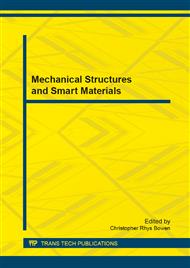p.157
p.161
p.165
p.173
p.177
p.181
p.185
p.189
p.195
Effect of Heat Treatment on Microstructure and Mechanical Properties of EH36 Alloy
Abstract:
The appropriate heat treatment process may obviously enhance the material mechanics performance, lengthens the service life of the machine parts , reduces the exploitation conditions of the material . This article uses mechanical properties test and the optical microscope research quenching and tempering comprehensive heat treatment craft is 15mm controls to thickness controlled rolling and controlled cooling (TMCP) condition tissue and the properties of the EH36 level ship plate steel influence. The result indicated that, after the heat treatment the TMCP condition ship plate steel overall performance has enhances greatly, although has the drop slightly in the intensity, but its plasticity, the low temperature impact performance all has the distinct improvement in particular.
Info:
Periodical:
Pages:
177-180
Citation:
Online since:
January 2014
Authors:
Keywords:
Price:
Сopyright:
© 2014 Trans Tech Publications Ltd. All Rights Reserved
Share:
Citation:


